Golden Triangle with Wildlife and the States of Himachal and Punjab
Day 1 ARRIVE DELHI
Arrive at Delhi airport from either Goa or from an international flight. You will be met by our representative and transferred to your hotel where you check-in.
Rest of the evening can be spent relaxing in the hotel. We would suggest that you have dinner in the hotel where there are plenty of options of good dining. Overnight at hotel.
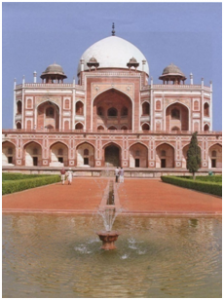
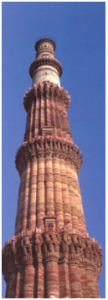 Day 2 DELHI
Day 2 DELHI
After breakfast, at 0930 hrs, you go on a sightseeing tour of Delhi. Among some of the most i nteresting highlights of your city tour of Old and New Delhi are the Jama Masjid, Chandni Chowk and Raj Ghat in the old city area and in the New Delhi, the Laxmi Narayan Temple, the Humayun’s Tomb and the Qutab Minar etc. The guide will advise and offer suggestions on where you can stop for lunch. You return to the hotel around 5pm. You may choose to have dinner in one of the many restaurants in Connaught Place. It is a well known street in downtown Delhi.
Overnight at hotel.
Day 3 DELHI – JAIPUR (245 Kms / 5 hrs approx)
After breakfast, drive to Jaipur and upon arrival, check-in at your hotel. En route, you will have a short break at a motel where you can use the rest rooms and eat some snacks or order a meal if you wish. Dinner can be had in the hotel itself, or you could ask the driver to take you to the Pink City to have dinner at one of the many restaurants over there.
Overnight at the hotel.
Day 4 JAIPUR
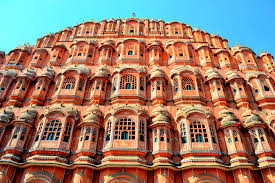 After an early breakfast, at 8am, you will go on an excursion to Amber F ort, the ancient capital of the State until 1728. Visit the Jagmandir of the hall of victory glittering with mirrors, Jai Mahal and Temple of Kali. Take a ride on a elephant
After an early breakfast, at 8am, you will go on an excursion to Amber F ort, the ancient capital of the State until 1728. Visit the Jagmandir of the hall of victory glittering with mirrors, Jai Mahal and Temple of Kali. Take a ride on a elephant
Hawa Mahal – Jaipur
This will be followed by a sightseeing tour of Jaipur city. Among the principal sights are the Jantar Mantar of the Observatory, The Palace of Winds or Hawa Mahal, the City Palace & Museum. Jaipur is also a major centre of precious and semi precious stones, jewellery, cotton textiles and the typical Blue Pottery.
You can enjoy lunch the Amber Fort restaurant.
Overnight at the hotel.

Amber Fort Jaipur
Day 5 JAIPUR – RANTHAMBORE (145 Kms/3.5 hrs approx)
After breakfast, at 0800 hrs, drive to Ranthambore and upon arrival, check in at the resort.
Ranthambore – the 392 sq km National Park is the earlier hunting preserve of the Maharajas of Jaipur and was once the scene of royal hunting parties. Today, it is famous for its tigers and is one of the best places in the country to see these majestic predators in the wild. The tigers can be spotted quite often even during the day, at their normal pursuits – hunting and taking care of their young. Ranthambore has large numbers of sambar, chital and nilgai. Sounders of boar and an occasional gazelle – the chinkara can be seen, as also the Indian hare, mongoose and monitor lizards.
In the afternoon, at 1430 hrs take a game viewing Jungle Safari to the Ranthambore National Park. You would normally be back at the resort by 5pm.
Overnight at the resort
Day 6 IN RANTHAMBORE
Early morning at 0600 hrs and in the afternoon at 1430 hrs, you will go on a game viewing jeep safari at Ranthambore National Park.
Overnight at the hotel.
Day 7 RANTHAMBORE – BHARATPUR (230 Kms/05 hrs approx)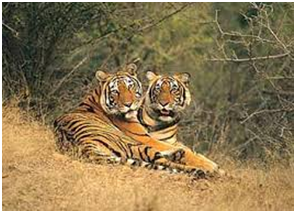
After breakfast, drive to Bharatpur, and upon arrival check in at the hotel. The evening is free to relax and for independent activities.
Overnight at the hotel.
Day 8 BHARATPUR – FATEHPUR SIKRI – AGRA (55 Kms/01 Hrs approx)
Early morning at 0600 hrs visit to the Bharatpur Bird Sanctuary, a UNESCO World Heritage Site where 377 species of birds, including roseate spoonbill, Dalmatian pelican, and several species of crane, converge on just 11 square miles of wetland and scrubland habitat.

Bharatpur Bird Sanctuary
You will then return to the hotel for breakfast and after breakfast at 0930 hrs, depart for Agra. En-route you visit Fatehpur Sikri, the deserted capital of Mughal India. Among the principal attractions of Fatehpur Sikri are the large audience halls, palaces, the Mosques, the tomb of Salim Chishti, The Panchmahal, and the Buland Darwaza, which is one of the biggest gates in Asia. Upon arrival, check-in at the hotel.
Day 9 AGRA – DELHI (205 Kms/4.5 Hrs approx)
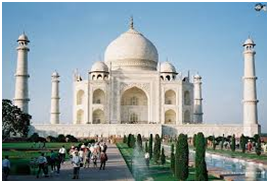
Taj Mahal
Early morning at sunrise visit to Taj Mahal. Built by the Mughal Emperor Shah Jehan, this beautiful mausoleum is constructed of pure white marble and is an architectural marvel. Built in the memory of his beloved queen Mumtaz Mahal, the building was conceived as a garden tomb with the mausoleum rising at the far end of the complex with the river Yamuna flowing below. Beneath the dome are the cenotaphs of Mumtaz Mahal and Shah Jehan.
Agra Fort was built by Emperor Akbar over the years 1565 – 1573 (for history buffs, this was during the reign of Queen Elizabeth 1 of England) with its maze of courtyards, mosques, and private chambers. Most of the buildings originally built by Akbar were destroyed and were replaced by his grandson Shah Jehan. The only surviving structure from Akbar’s period apart from the solid sand stone ramparts and the gateway is the Jehangir Mahal. It is the biggest private residence in the complex and its architecture indicates strong influences from Hindu overtones.
In the afternoon, at 1200 hrs, drive to Delhi and upon arrival check-in at the hotel.
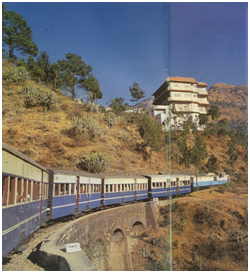
KALKA – SHIMLA
Overnight at the hotel.
Day 10 DELHI – KALKA – SHIMLA
After early breakfast at 0630 hrs transfer to the railway station to board the Kalka-Shatabdi train (0740-1145 hrs) and remain in transit to connect to the Heritage Toy train, Himalayan Queen (1210 – 1720 hrs) to Shimla, which takes you through the beautiful mountain valleys to Shimla. You will be met and assisted on arrival at the railway station. Transfer to hotel.
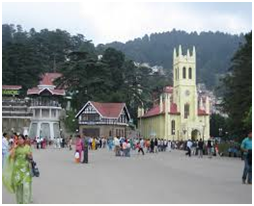
SHIMLA
Overnight at the hotel.
Day 11 IN SHIMLA
After breakfast, at 0930 hrs, proceed on a sightseeing tour of Shimla, visiting Rashtrapati Niwas which was the former residence of British Viceroys , Jakhu Temple , Summer Hill, Chadwick Falls, Prospect Hill, Himachal State Museum etc. If you wish to explore a little bit more of Shimla, and time permits, we would suggest that you seek the advice of your guide.
Overnight at the hotel.
Shimla
Situated in the North-west Himalayas, Shimla lies at an altitude of 2,200 metres and is the capital of Himachal Pradesh. It was once famous as the Summer Capital of the British Raj and still retains a mixture of Gothic and mock Tudor buildings, English cottages and architecture. Though evocative of a bygone era, it is today a thriving Capital of a State famous for its snow capped peaks, apples, pine forests, flowers and gentle smiling people. It is an ideal base from which to visit scenic places such as Chail, Kufri, Mashobra and Narkanda . Shimla’s climate, easy accessibility, well developed tourist facilities and numerous attractions have made it one of India’s most popular hill resorts. There are unforgettable walks, a variety of shops and its renowned Anglo Saxon architecture. Visitors to Shimla can walk down its famous Mall with its rows of restaurants, fashionable shops and colonial architecture. Below this, is he winding labyrinth of the Lower Bazaar. Above the Mall and the Scandal Point is the wide Ridge and the unusual Lakkar Bazaar with its wood craft and curio shops. Equally fascinating is the exotic Tibetan Bazaar. The Ridge holds the new-Gothic structure of Christ Church. The town’s other important church is St Michael’s Cathedral – which is just off the Mall.
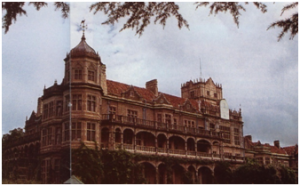
Vice Regal Lodge
Away from the crowds is the magnificent English renaissance structure of the former Vice Regal Lodge – now the Indian Institute of Advanced Studies.
The western side of the town has some fine walkways. One can ramble through old deodar, flowering rhododendrons and some stunning ancient oak trees. From Boileau ganj, near the Institute, begins the climb to the temple of Kamna Devi on Prospect Hill – and from the top, the view is simply spectacular. This section of Shimla has the famous Glen which is a thickly wooded ravine through which a stream flows.
A special delight is to travel by one of the few remaining mountain railways in the world – the narrow gauge train from Kalka to Shimla (normally referred to as a toy train by the locals) as it winds through 103 tunnels and some picturesque scenery during its 90 kms journey up the mountains. The journey takes about 6 hours
Mashobra: 12 kms out of Shimla is this beautiful suburb. From the heart of Mashobra a pedestrian track leads down to Sipur. This is a large and exquisite glade shaded by ancient cedar trees. An annual fair is held at Sipur every April. A trek to the Shali Peak – the highest in the area – can be made from Mashobra. Craignano, with its rest house – and once the estate of an Italian confectioner is close to Mashobra.
Naldehra: 23 kms from Shimla and named after the little temple. It has a 9 hole golf course and is one of the oldest golf courses in India. The original course was laid out by the British Viceroy, Lord Curzon, who was so enchanted by this spot that he gave his daughter Alexandra, Naldehra as her second name.
Chail: 43 kms from Shimla and with a lush green setting, is the former summer capital of the Patiala state. At 2,250 metres above sea level, it has the world’s highest cricket pitch and polo ground. The old palace, now a hotel, and the rich deodar forests are added attractions.
Kufri: 16 kms from Shimla at 2,600 metres is this mini hill station. It has long been famous for its ski slopes and panoramic views where deep valleys and forests rise towards the lofty Himalayas, shrouded by snow.
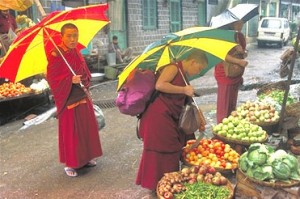
SHIMLA – DHARAMSALA
Narkanda: 64 kms from Shimla at 2,700 metres, Narkanda has a choice of ski slopes – a beginner’s run, a slalom slope and sharper descents for the more experienced skier. Hattu Peak (3,300 mts) rises through spruce trees to crown the place. Himachal’s horticultural heartland of Thanedar and Kotgarh are close at hand.
Day 12 SHIMLA – DHARAMSALA (260 Kms/7 hrs approx)
After breakfast, at 0800 hrs, drive to Dharamsala (270 Kms/07 hrs approx), en-route visiting Baijnath Shiv Temple which is over 1000 years old. Upon arrival, check in at your hotel. Rest of the day is free to explore the city. Overnight at hotel.
Day 13 IN DHARAMSALA
After breakfast, at 0900 hrs, you will go on a sightseeing tour of Dharamsala, A beautiful little hill Station, Dharamsala is 90 kms from Pathankot, lying on the other side of Chamba. It is the headquarters of Kangra district. The waterfall of Bhagsunath is within a walking distance. The Dalai Lama, the head of Tibetan Buddhism, who fled Lhasa in 1959, has lived in refuge in this hill town.
Overnight at the hotel.
Kangra Valley

Kangra Valley
The Kangra Valley is situated between the imposing Dhaula Dhar range to the north and the Shivalik foothills in the state of Himachal Pradesh. The beautiful Valley of Kangra is a magical showcase for Nature’s splendour. Besides its natural beauty, its cheerful people, hill paintings, temples, and forts, its adventure sports attracts thousands of tourists every year from the world over. The Gaddis of Kangra are nomadic shepherds who came from Chamba centuries ago and found their way across the Dhaula Dhar in their quest for greener pastures for their flock of sheep. Today they live in the lower part of the valley.
The town of Kangra was once the capital of this great hill state is famous for its temples – the most notable is the shrine dedicated to the Goddess Brijeshwari. It is steeped in romance and has a rich historical past. Kangra became a Mughal province in 1620 when the then prince, Shah Jahan, captured it for his father, Emperor Jehangir. In the 18th century it was recaptured from the Mughals by the Rajputs and its boundaries extended to Chamba and Lullu valleys. The region prospered under the victor Raja Sansar Chand. The Kangra Fort, where the Raja held court for nearly 25 years was adorned with paintings and attracted art lovers from afar. About 40,000 of these paintings are preserved in temples, palaces and in museums at Chamba, Chandigarh and Delhi.
Dharamsala
Dharamsala popularly known as the Scotland of India is one of the 80 hill stations established by the British and has one of the most spectacular settings for a hill station. This hill station is closest to the perennial snowline. It varies in height from 1250 meters at the bazaar level to 1770 meters at McLeod ganj. Dharamsala is surrounded by deodar forests and provides a superb view of the great granite mountains that almost overhang the town.
About 10 kms away from Dharamsala is the suburb of McLeod ganj which has a strong Tibetan influence. Monks in deep red are a common sight and it is the headquarters of the Dalai Lama settled here after his flight across the Himalayas following the Chinese invasion of Tibet in October 1959. The Tibetan community has tended to take over the hospitality and restaurant businesses. The following words might help when having an exchange in Tibetan.
Tashi delek (hello, good luck)
Thukje-chey (thank you)
Thukje-sik (please)
Gong-thag (sorry)
Shoo-den (good-bye)
Jaa (go)
The Namgyal Monastery, the Centre Tibetan Studies, is known as Little Lhasa and is a major attraction in McLeod ganj. It is opposite the Dalai
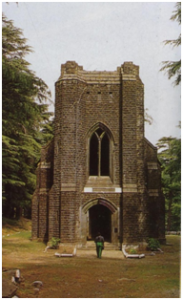
Church of St John in the Wilderness
Lama’s residence and resembles the centre of the one in Lhasa. It is a 5 minute walk from the main bazaar. The other major attraction is the Church of St John in the Wilderness, at Forsyth Ganj just below McLeod Ganj, which has attractive stained glass windows. Lord Elgin, one of the few British viceroys of India to die in office, is buried here. He chose to be buried in Dharamsala as it reminded him of his native Scotland with its lochs and mountains. His summer residence, Mortimer House, was acquired by the Government of India to house the official residence of the Dalai Lama. The original Tea House built by Lord Elgin and catered to by a local grocery store called Nowrojee & Son continues to prosper to this date as a hangout for visitors to McLeodGanj.
If you are interested in trekking, there are a number of walkways like the 2 km stroll to Bhagsunag which has a spring and a temple or to Dharamkot which is 3 kms and has very fine views. Or if you feel energetic enough, you could continue on towards the snowline. 10 kms from McLeod ganj bus stand is Dal Lake, the site of an annual fair held in September.
Palampur
Situated 35 kms from Dharamsala at an altitude of 1,250 meters, is the little town of Palampur which is surrounded on all sides by well laid out and manicured tea gardens. The British introduced tea plantations in this area which are known to produce high quality tea sold at a premium in foreign markets.
Kangra shepherds, easily recognisable in their duffle shirts, conical caps and long ropes tied around their waists can be seen walking the streets of this town. Palampur is a popular camping region for trekkers. From here one can cross the Dhaula Dhar ranges through the Waru Pass and enter the feeder of the Upper Ravi Valley. A major attraction in Palampur is Newghal Khud, 300 metres wide chasm through which gushes the Bundla steam. During the monsoons this stream becomes a roaring torrent.
The temperatures in the Kangra Valley in Summer are: Max: 380 C Min: 220 C
Winter are: Max: 150 C Min: 00 C
In summer light woollens or cottons will suffice, while heavy woollens are required in winter.
Shopping: Kotwali Bazaar and McLeodganj Bazaar are major shopping areas. The latter has numerous shops selling Tibetan handicrafts.
Day 14 DHARAMSALA – AMRITSAR (170Kms/05 hrs approx),
After breakfast, at 0800 hrs, drive to Amritsar and upon arrival check in at the hotel. In the evening visit to the Palaki Sahib Ceremony at the Golden Temple. Overnight at the hotel.
Day 15 IN AMRITSAR
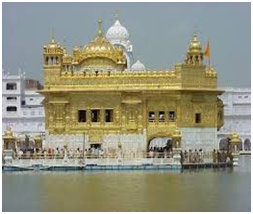
Golden Temple
After breakfast, at 0900 hrs, proceed on a sightseeing tour of Amritsar city. Visit the Golden Temple – the sacred Sikh sanctuary, Marbled, Bronzed and covered with gold leaf where the Guru Granth Sahib-The Bible of the Sikhs is placed reverently. Also visit the community kitchen where 10000 pilgrims are fed daily on voluntary and complimentary basis. Visit the historic Jallianwala Bagh, where scores of Indians were killed. Also visit the beautiful Ram Bagh Gardens. In the evening proceed to the Wagah Border (Indo-Pakistan border) and witness the flag exchange ceremony by the border security forces of India & Pakistan. Overnight at the hotel.
Day 16 AMRITSAR – DELHI – GOA
After breakfast, check-out of your hotel and transfer to the airport to board either your international flight back home or your domestic flight to Goa via Mumbai..
END OF THE TOUR




